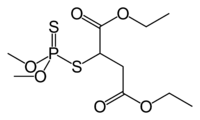
Efficacy and Safety of a Water-Based Head Lice Lotion: A Randomized, Controlled, Investigator-Blinded, Comparative, Bicentric Study
Sign Up to like & getrecommendations! Published in 2018 at "Dermatology and Therapy"
DOI: 10.1007/s13555-018-0274-x
Abstract: IntroductionSilicones (e.g., dimethicone) are effective and safe alternatives to insecticides for the treatment of head lice. However, silicones are lipophilic substances and do not only leave the hair greasy but they are also difficult to wash out.… read more here.
Keywords: head lice; product; test product;

The darker side of head lice infestations.
Sign Up to like & getrecommendations! Published in 2022 at "Clinics in dermatology"
DOI: 10.1016/j.clindermatol.2021.01.010
Abstract: Head lice (Pediculus humanus capitis) infestations are prevalent among young children and generally not considered a health hazard. Although massive chronic head lice infestations have been documented in paleo medical literature, their association with severe… read more here.
Keywords: darker side; side head; head; lice infestations ... See more keywords

Itchy critters: Preparing volunteer travelers for head lice infestation.
Sign Up to like & getrecommendations! Published in 2019 at "Travel medicine and infectious disease"
DOI: 10.1016/j.tmaid.2019.07.011
Abstract: [Extract] Dear Editor, A previous TMAID publication highlighted the spread of ectoparasites in confined conditions [1], a situation that often also applies to short and long-term travellers, including volunteers. One of the most unpleasant tasks… read more here.
Keywords: travelers head; head lice; preparing volunteer; itchy critters ... See more keywords

Putative native South Amerindian origin of head lice clade F: evidence from head lice nits infesting human shrunken heads
Sign Up to like & getrecommendations! Published in 2022 at "Scientific Reports"
DOI: 10.1038/s41598-022-08176-2
Abstract: The head louse, Pediculus humanus capitis, is a strictly obligate human ectoparasite with a long history of association with humans. Here, 17 ancient head lice nits were recovered from six shrunken human heads (known as… read more here.
Keywords: native south; lice; head lice; lice nits ... See more keywords

Head Lice at School: Traditional Medicine and Community Engagement
Sign Up to like & getrecommendations! Published in 2021 at "Health Equity"
DOI: 10.1089/heq.2020.0065
Abstract: Purpose: The prevalence of head lice in poor rural communities and urban slums is estimated to be between 28% and 43% in Brazil, respectively. Children are among the most affected, often in clusters within schools.… read more here.
Keywords: medicine; community; head lice; school ... See more keywords

The Attractivity of the Head Louse, Pediculus humanus capitis (Pediculidae: Anoplura) to Isolated Compounds and Blends of Human Skin
Sign Up to like & getrecommendations! Published in 2022 at "Journal of Medical Entomology"
DOI: 10.1093/jme/tjac041
Abstract: Abstract Human head lice Pediculus humanus capitis De Geer (Phthiraptera: Pediculidae) are ectoparasites that cause pediculosis, a global scale disease mainly found in school-age children. Previous works from our laboratory found nonanal, sulcatone, and geranylacetone… read more here.
Keywords: head; isolated compounds; pediculus humanus; humanus capitis ... See more keywords

Molecular Markers of Pesticide Resistance and Pathogens in Human Head Lice (Phthiraptera: Pediculidae) From Rural Georgia, USA
Sign Up to like & getrecommendations! Published in 2017 at "Journal of Medical Entomology"
DOI: 10.1093/jme/tjx039
Abstract: Abstract Although the head louse, Pediculus humanus capitis De Geer, and body louse, Pediculus humanus humanus L., both have a worldwide distribution, the occurrence of head louse pediculosis appears to be more prevalent in modern… read more here.
Keywords: head; georgia; head lice; lice ... See more keywords

First Detection of the Kdr Mutation T929I in Head Lice (Phthiraptera: Pediculidae) in Schoolchildren of the Metropolitan Area of Nuevo Leon and Yucatan, Mexico
Sign Up to like & getrecommendations! Published in 2017 at "Journal of Medical Entomology"
DOI: 10.1093/jme/tjx045
Abstract: Abstract The head louse Pediculus humanus capitis (De Geer) is a hematophagous ectoparasite that inhabits the human scalp. Infestations by this insect are commonly known as pediculosis, which is more common in younger groups. These… read more here.
Keywords: head; metropolitan area; head lice; mexico ... See more keywords

Head Louse Feces: Chemical Analysis and Behavioral Activity
Sign Up to like & getrecommendations! Published in 2019 at "Journal of Medical Entomology"
DOI: 10.1093/jme/tjz184
Abstract: Abstract Human head lice Pediculus humanus capitis (De Geer) (Phthiraptera: Pediculidae) are insect parasites closely associated with humans, feeding on the blood of their hosts and causing them skin irritation and probable secondary infections. Despite… read more here.
Keywords: head; head louse; louse feces; head lice ... See more keywords

Comparison of the proliferation and excretion of Bartonella quintana between body and head lice following oral challenge
Sign Up to like & getrecommendations! Published in 2017 at "Insect Molecular Biology"
DOI: 10.1111/imb.12292
Abstract: Human body and head lice are highly related haematophagous ectoparasites but only the body louse has been shown to transmit Bartonella quintana, the causative agent of trench fever. The mechanisms by which body lice became… read more here.
Keywords: quintana; head lice; body head; oral challenge ... See more keywords

Abametapir for the Treatment of Head Lice: A Drug Review
Sign Up to like & getrecommendations! Published in 2021 at "Annals of Pharmacotherapy"
DOI: 10.1177/10600280211027968
Abstract: Objective This article reviews the pharmacology, safety, efficacy, and clinical importance of abametapir 0.74% (Xeglyze) for the treatment of head lice. Data Sources From 2020 to May 2021, a systematic review of the MEDLINE and… read more here.
Keywords: treatment head; treatment; abametapir; head lice ... See more keywords